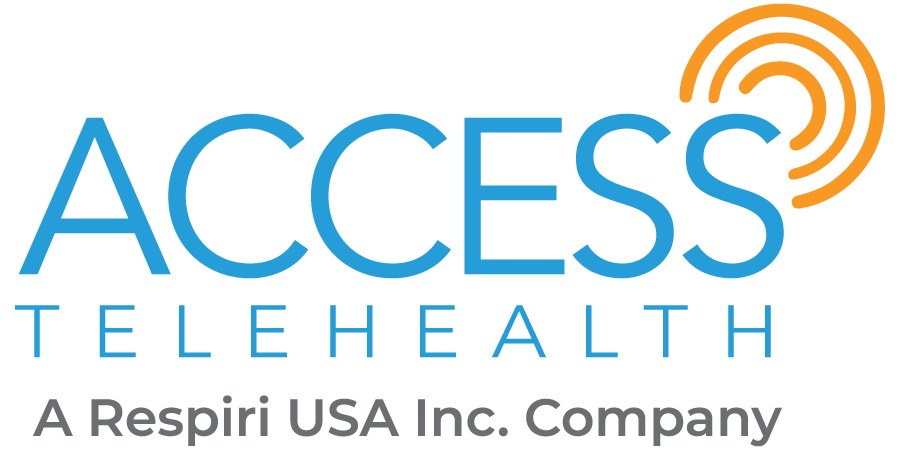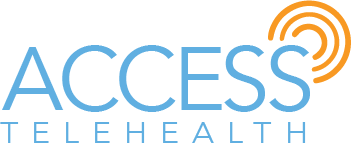Do Patients See the Benefits of Telehealth? Let's Look at the Data.
Are you a provider who hasn’t had much experience with telehealth? Have you considered using telehealth in your practice?
If so, check out this article. You will take a deep dive into the benefits of telehealth. Also, see how it improves patient satisfaction.
What is Telehealth?
Telehealth describes health care provided via a telecommunication approach. You may also hear it referred to as telemedicine or virtual health.
When face-to-face care is not an option, telehealth technologies can provide solutions. This strategy has been in use for many years to address the needs of rural communities. Today, it's become an important method for providing care during the COVID-19 pandemic.
A Telehealth Definition Framework was created by members of the National Consortium of Telehealth Resource Centers. Its purpose is to assist policymakers, clinicians, payers, and patients understand telehealth's role in providing healthcare services.
Telehealth includes the following care modalities:
- Clinical diagnosis
- Clinical monitoring
- Education about the diagnosis
- Diagnosis management and evaluation
Today, you will find telehealth in many of these locations:
- Dentistry
- Counseling
- Physical therapy
- Occupational therapy
- Speech therapy
- Home health
- Chronic disease evaluation and management
- Disaster management
- Consumer and professional education
The options are almost limitless due to the wide use of electronics on a daily basis.
Benefits of Telehealth
We have discussed the broad access to telehealth which is one important benefit. Telehealth also offers many other benefits for providers and patients.
Patient Benefits
Some of the patient benefits of telemedicine include:
- No commute required which saves time, childcare, and gas expense
- Improved accessibility for those with disabilities
- Increased access for those who are geographically distant or homebound
- Increased access for people who are in long-term care or correctional facilities
- Improved participation in preventative healthcare measures
- Decreased chronic or severe disease due to health prevention
- Increased convenience and less time spent obtaining healthcare
- Decreased risk of contracting or spreading infection in a healthcare setting
Telehealth has definitely proven effective during the pandemic. Many patients may now prefer this method of healthcare, especially for routine monitoring.
Healthcare Provider Benefits
So how does telehealth benefit the provider? Consider the following examples:
- Lower overhead due to less office space and support staff needs
- Increased revenue because the clinician can treat more patients
- Improved personal health due to less exposure to pathogens
- Increased patient satisfaction which keeps the patients coming back
Can you envision a plan that incorporates telehealth into your current practice? The need for in-person visits will never go away. Yet, routine checks and follow-up on treatment modification could take place via telehealth.
Tips for Improving Telehealth Visits
When starting telehealth visits, there are several strategies for more effective encounters. The following are some tips from the Academy of Communication in Healthcare.
Be “Present”
Begin by making sure your technology is working. Do you have good quality audio and video? Gather all the materials you will need.
Mentally prepare or create an outline for what you want to address during the “visit”. Make sure that your environment is free of distractions.
Focus on the Patient’s Needs
Introduce yourself and establish a good rapport. Ask open-ended questions to encourage the patient to describe their needs. Help them explore their thoughts, concerns, and healthcare expectations.
Practice Active Listening
If you are on a video conference, attend to both verbal and nonverbal cues. Describe what you hear and/or see and validate that information with the patient. Address their concerns with empathy.
Provide the Patient With Information
Make sure that you limit the use of medical jargon. This can make the patient feel overwhelmed and reluctant to ask questions. Provide information in clear, concise bits and check for understanding.
Invite the patient to summarize their understanding of their plan of care. Remember that stress limits an individual’s ability to comprehend and retain information. Increased psychological disorders also increase physical health risks.
During this COVID-19 pandemic, make sure you assess each patient’s emotional well-being.
What Are Examples of Telehealth?
Telemedicine or telehealth can be accomplished in many ways. The following describes several different avenues in used today.
mHealth
About 95% of Americans have cell phones and 77% are smartphones. A new term, “mHealth”, has emerged to describe telehealth via mobile devices.
This may include video visits, chat or a traditional phone call between the provider and patient.
Video Telehealth
With real-time video communication platforms, distance becomes irrelevant. Providers can evaluate patients via video conferencing, video-scopes, and high-resolution cameras.
Video capabilities allow the clinician to view some of the patient's physical concerns. Specialists can also use these tools to perform pathology readings on specimens. This allows for remote diagnoses.
For physical, occupational, and speech therapists, video telehealth lets them watch activity performance. They can coach and correct the patient as they perform prescribed exercises.
RPM
Remote patient monitoring, or RPM, can be invaluable in monitoring and diagnosing diseases. The patient may wear an electronic device that transmits health data to the provider. Other mobile devices, smartphone apps, and internet-connected computers can also provide data.
This allows for monitoring over time. The patient often “marks” when they feel symptoms. Providers can have patients record their activity levels to test their physiological responses.
Some RPM technology is used to remind the patient to collect the data. For example, record and transmit their vital signs, blood sugar, oxygen level, weight, or cardiac data.
Are You Looking for a Telehealth Solution?
With the current state of world events, the face of healthcare is changing almost daily. It’s time to take a broader approach to providing healthcare. This article provided information about the benefits of telehealth.
At Access Telehealth, we provide state-of-the-art telehealth software for healthcare providers. Our customers include providers in almost every aspect of healthcare.
Our company is here to create a great telehealth experience for you and your patients. Contact us today to learn more about our products.



